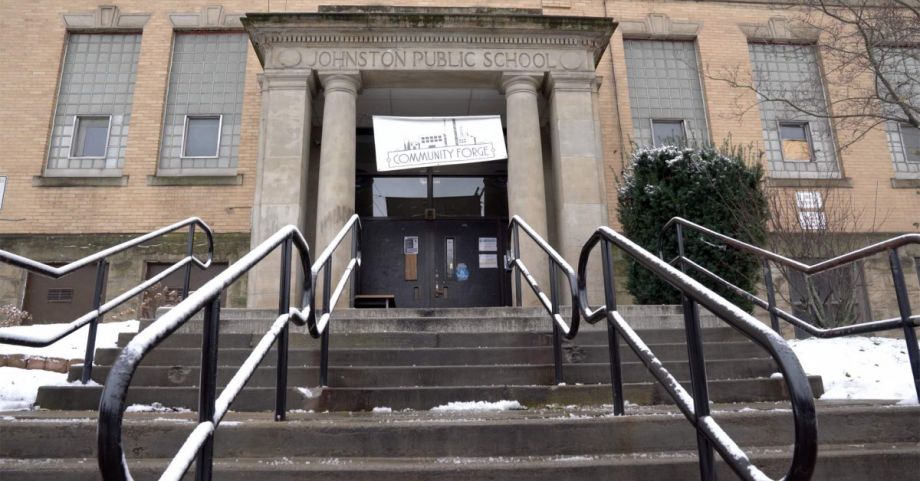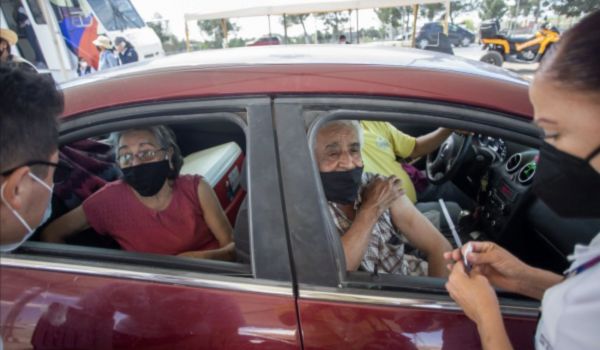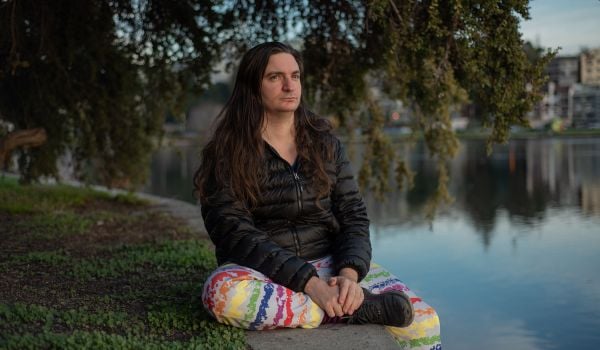Andre Perry could not have anticipated a pandemic would lay bare the central premise of his new book about the devaluation of black lives and black property in the United States. But, after working on it for the last four years, he’ll have to live with it.
Infection rates and death rates for COVID-19 are disproportionately black and brown, as the CDC has noted. Several different explanations might be offered for that emerging statistic. Maybe black people are somehow genetically more susceptible to the disease, or maybe they make personal choices that make them more vulnerable to infection and death related to COVID-19. Or maybe, just maybe, the entire economy is built intentionally to put black bodies and black communities in harm’s way.
Out this month, Perry’s new book, “Know Your Price: Valuing Black Lives and Property in America’s Black Cities,” argues that policymakers have long ignored the third explanation, and instead they’ve historically enacted policies based on the mistaken assumption that black people or black communities are pathologically flawed and primarily have themselves to blame for the horrendous social conditions they face relative to other groups.
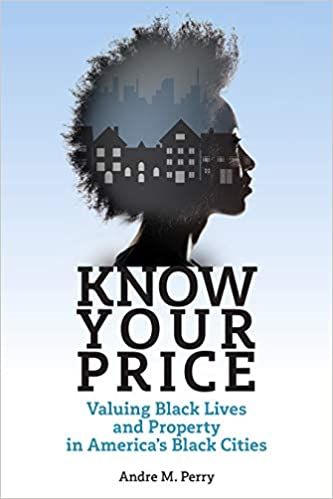
(Book cover courtesy Brookings Institution Press)
As the CDC itself says, “Health differences between racial and ethnic groups are often due to economic and social conditions that are more common among some racial and ethnic minorities than whites.” But as a trained researcher with a doctorate in education policy and leadership, Perry knows all too well that science — especially social science or medical science or climate science — is never enough to convince enough people in the right places to drive public policy discussions.
After all, Perry says, it wasn’t science that justified the policies that make black and brown people more vulnerable to COVID-19 today — the same policies that make it relatively harder for black and brown people to take out a loan for housing or small business, or to access certain careers that disproportionately put or keep white families on an upwardly mobile trajectory. It was something else.
“Narrative is a powerful force in policy, and the narratives that the state of black cities or black communities are a consequence of black individuals’ behavior is one that persists in spite of all the data that point to other causes,” Perry says. “I had to produce compelling narrative as well as produce compelling research. The research part came easy, but the narrative part did not.”
It was harder to produce the narrative because Perry needed to break out of the usual “dispassionate observer” mindset that keeps the researcher out of the story.
“Researchers act as if our personal story doesn’t affect our approach to our work,” Perry says. “What I wanted to do with this book is demonstrate first and foremost that research is very personal, and that it involves real lives, and our personal choices around how we approach research will impact policies that legislators eventually will write based on our research.”
As Perry writes in his new book, researchers are broadly trained to center white people, and specifically white men, even if they themselves are not white or men. In regression analysis, when analyzing something like the impact of race on academic achievement, Perry explains in the book that researchers are taught to make white men the default or “referent” group. White men are often the largest group within a dataset, and mathematically, the recommended way to build a statistical model is to use the largest group as the referent group.
But that means even a well-meaning statistician today may be inadvertently centering white men in any research findings they produce, with everyone else seen as having some deficiency compared to white men. Policies based on that research are thus designed to correct for those deficiencies.
“But if we are really interested in improving Black communities, it’s much less useful to select Whites as the referent,” Perry writes. “It’s much more useful, in many cases, to examine variation within the Black population to see what factors and conditions can be attributed to differences.”
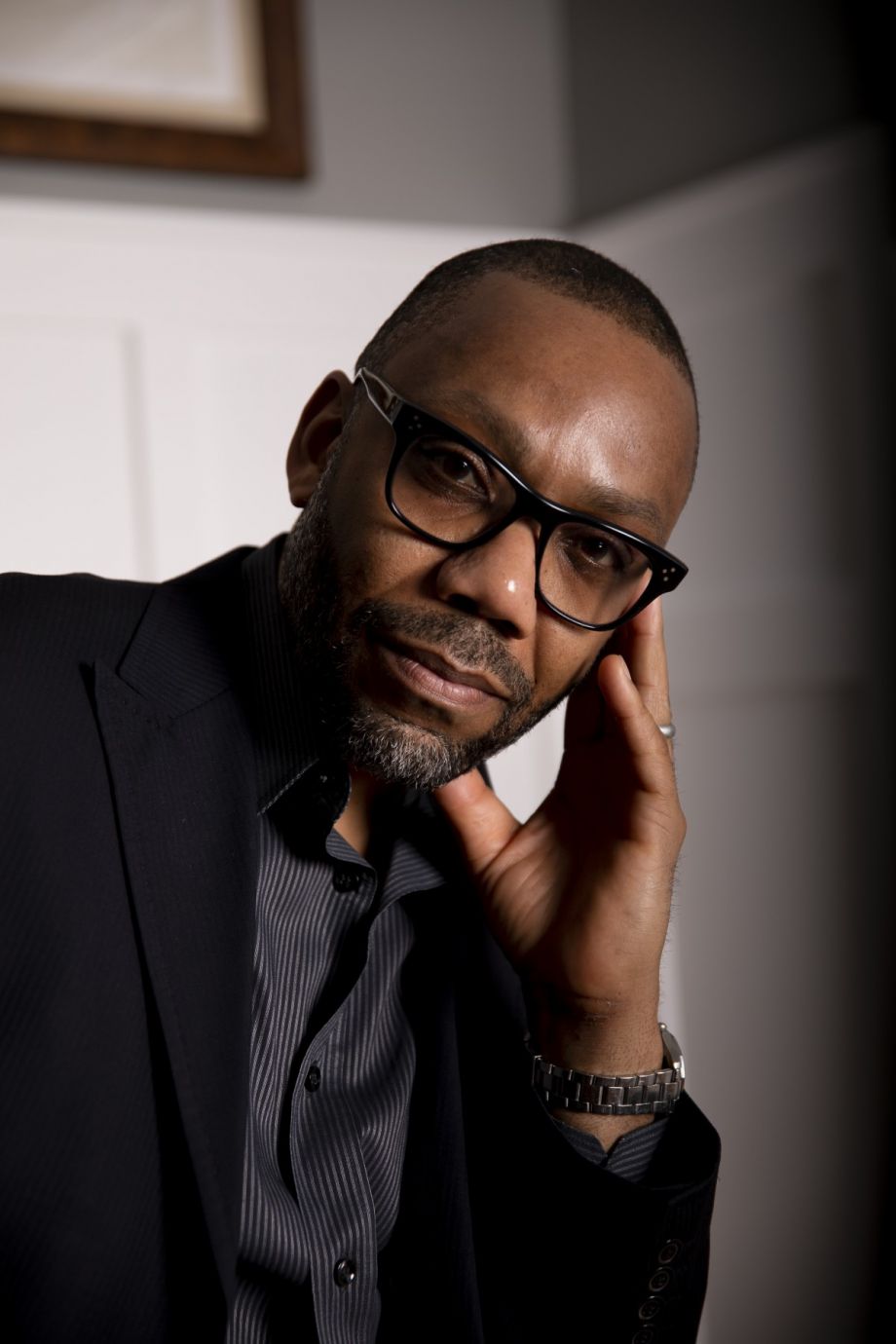
Andre Perry (Image courtesy Andre Perry)
It’s the social scientist’s way of living up to the hashtag, “#BlackLivesMatter.” If black lives really mattered, black people and black communities needed to stand alone as valid and worthy of research — and public as well as private investment in black people and places should be guided by that research instead of being guided by research that, at its core, compared black lives to white lives.
“White supremacy gets in the way of rigor,” Perry says. “The same beliefs that motivate a racist policeman to harass an innocent bystander are the same attitudes and beliefs that researchers have when analyzing our social problems. It’s the same attitudes that are behind why black children are expelled at higher rates, the same reason why treatment of black women’s symptoms is reduced in hospital settings.”
On the research side, after coming to Brookings in 2017, Perry started producing research that showed evidence for the devaluation of homes as well as businesses simply because of the fact that they happened to be located in black neighborhoods. But in order to produce a compelling narrative in support of his bigger point about the need for more rigorous study of black lives and black assets, Perry needed to start with his own life as a black man in America.
“I recognize that there may be some who don’t agree with that approach, but this is what I needed to write,” Perry says. “I need more people to put their biases on their sleeve. I’m clear that hey, I’m one of the people we research about.”
And that’s why “Know Your Price” weaves Perry’s life journey with his research, focusing on five cities that are or until recently were majority black, starting with his hometown of Wilkinsburg, Pennsylvania.
“One of the things I wanted to show is that there’s been people who’ve always recognized that black people, firms, and institutions are worthy of investment in spite of the rest of society devaluing them,” Perry says. “One of those people was my mom. All these things are connected, they’re very personal. For me, I wanted to show that by using autobiographical stories and weave them into the research data.”
Perry reflects on the good, the bad and the ugly, and even apologizes along the way for falling short of what he’s now challenging others to do — to see and understand black lives and black places as inherently worthy of investment.
In one example from the book, Perry talks about his time as the CEO of a charter school network in New Orleans, summarily canceling contracts for schools within the network, putting otherwise qualified and worthy teachers out of jobs. Those decisions, he confesses, were based on research he later came to view as insufficient because it placed white students at the center, while all that time black students were the largest segment of the population he was serving.
The research Perry could have used to make better decisions as a charter school network administrator wasn’t yet available. All the research he had at his fingertips at the time said to close schools with low student test scores, while discounting both the idea that structural economic barriers could have a negative effect on test scores as well as the additional turmoil that closing schools can cause on black communities.
“I want to be in a space where policymakers and writers can say you know what, I was wrong on that and I should have had a different perspective,” Perry says.
There are also positive examples in the book, of people as well as institutions that view black people and black communities as assets worthy of investment — a nonprofit business incubator in a former elementary school in Wilkinsburg, a majority-black city that borders Pittsburgh, Pennsylvania; a black developer “buying up the block” in the majority-black city of Birmingham, Alabama.
Perry’s point with the positive examples is not that black people and black places don’t need outside investment. In each positive example he details the systemic barriers that those institutions or people face because they choose to focus on black communities. What Perry is saying is that these people, places and institutions warrant the same level of outside investment that public policy has long afforded to their white counterparts.
“I didn’t want to convey that all black people have to do is bootstrap,” Perry says. “But when you focus on assets, you’re also making a statement that there are assets worth building up, worth leveraging.”
It’s a point echoed by other recent works, like Mehrsa Baradaran’s “The Color of Money.” After meticulously detailing the history of black banks and why they have never been enough to close racial wealth gaps, Baradaran’s book still acknowledges in the end that black banks “promise and offer refuge from exploitation” perpetrated by mainstream banks. Her book argues that black banks still serve as a key rallying point for black communities even if black banks themselves are subject to the same systemic bias against them as their main customers.
“We have to start with the assets right at our disposal, right in front of us,” Perry says. “There was language for that back in the day, folks used to say he or she is ‘a credit to the community.’ I wanted to make sure that the people who valued people like me understand they are right, that there’s a reason to value black assets. These are not maladapted behaviors and maladapted institutions. These are credible practices, customs, institutions, people that are worthy of investment.”
If it was forces outside black communities that hold back or undermine black people, black institutions and black places, it’s outside forces that need to correct for those historical headwinds.
“This economy definitely needs reparations, it needs tax credits and low-interest loans and other things for black people that white people have enjoyed historically,” Perry says.
At the same time, Perry also thinks it’s important for public policy to ensure having wealth isn’t required to secure access to housing, healthy food, health care, clean air, quality education, quality jobs, small business investment and other aspects of a healthy society.
“We need to radically shift the architecture of economic policy that replicates inequality by only rewarding people with wealth,” Perry says.
This article is part of The Bottom Line, a series exploring scalable solutions for problems related to affordability, inclusive economic growth and access to capital. Click here to subscribe to our Bottom Line newsletter.

Oscar is Next City's senior economic justice correspondent. He previously served as Next City’s editor from 2018-2019, and was a Next City Equitable Cities Fellow from 2015-2016. Since 2011, Oscar has covered community development finance, community banking, impact investing, economic development, housing and more for media outlets such as Shelterforce, B Magazine, Impact Alpha and Fast Company.
Follow Oscar .(JavaScript must be enabled to view this email address)



